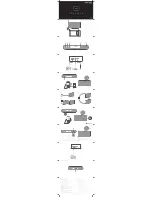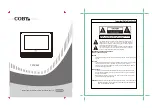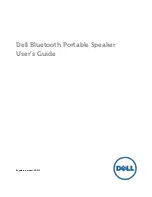
5
OPM-122
REV C
STARTING ELECTRIC MOTORS
Electric motors require much more current (Amps) to start than to run.
Some motors, particularly low-cost split-phase motors, are very hard
to start and require 5 to 7 times as much current to start them than to
run them. Capacitor motors are easier to start and usually require 2
to 4 times as much current to start them than to run them. Repulsion
Induction motors are the easiest to start and require 1 1/2 to 2 1/2
times as much current to start them than to run them.
Most fractional horsepower motors take about the same amount
of current to run them whether they are Repulsion Induction (RI),
Capacitor (C), or Split-Phase (SP) type. The chart below shows the
approximate current required to start and run various types and sizes of
120 Volt, 60 cycle electric motors under average conditions.
HP
AMPS
RUNNING
STARTING
AMPS
SP
CAP
RI
1/6
3.2
16 TO 22
6 TO 13
5 TO 8
1/4
4.5
22 TO 32
9 TO 8
7 TO 12
1/3
5.2
26 TO 35
10 TO 21
8 TO 17
1/2
7.2
NOT MADE
14 TO 29
11 TO 18
1
13.0
NOT MADE
26 TO 52
20 TO 33
The figures given above are for average load such as a blower or fan.
If the electric motor is connected to a hard starting load such as an air
compressor, it will require more starting current. If it is connected to a
light load, or no load such as a power saw, it will require less starting
current. The exact requirement will also vary with the brand or design
of the motor.
Self- exciting generators respond to severe overloading differently
that utility power. When over loaded, the engine is not able to supply
enough power to bring electric motor up to operating speed. The
generator responds with high initial starting current, but the engine
speed drops sharply. The overload may stall the engine. If allowed to
operate at very low speeds, the electric motor starting winding will burn
out in a short time. The generator winding may also be damaged.
UNIT CAPABILITIES
GENERATOR CONNECTIONS
The TB2400 is designed for 120 Volt alternating current (AC) and has
circuit breaker protected receptacles. Generator full output can be
drawn from the 120 Volt GFCI NEMA 5-20 receptacles, mounted on the
end of the generator.
The TB4800 and TB7200 generators are designed for 120/240 Volt
alternating current (AC) and have circuit breaker protected receptacles.
All three generators can be spun in either direction.
FULL POWER 120 VOLT ONLY
TheTB4800 and TB7200 generators can be converted to full power 120
Volt only. Replacement of the circuit breaker and receptacle is required.
The TB4800, has a 40 Amp 1-Pole circuit breaker. On the TB7200, a 60
Amp 1-pole circuit breaker and a 3-wire 60 Amp twist-lock receptacle is
recommended for full power applications. See wiring schematic below:
Check the appliance or tool nameplates for the current and voltage to
ensure compatibility. Although a circuit breaker is provided, damage
due to overloading constitutes abuse and will not be warranted. Refer
to the generator nameplate for unit’s capabilities.
TB4800 - Only 2,400 Watts at 120 Volt (20 Amps) can be taken from
the generator at receptacle A and up to 2,400 Watts at 120 Volts from
receptacle C.
TB7200 - Only 3,600 Watts at 120 Volt (30 Amps) can be taken from
the generator at receptacle A and up to 3,600 Watts at 120 Volts from
receptacle C.
The following diagram represents both the TB4800 and TB7200
generators.
120 Volt
240 Volt






























